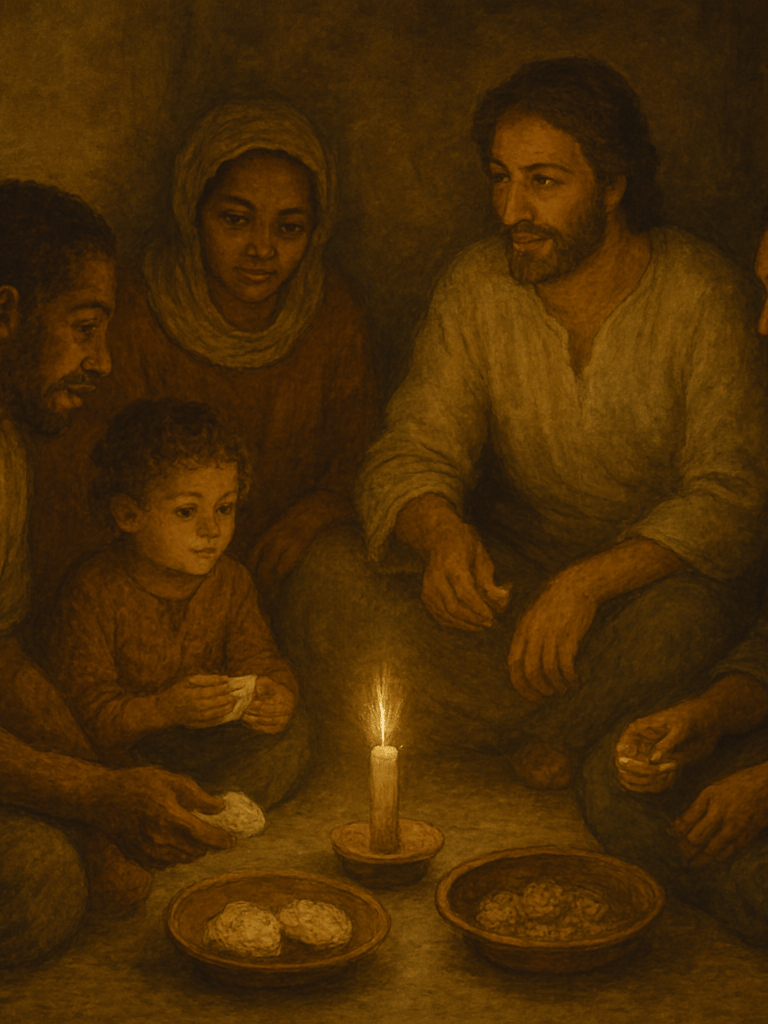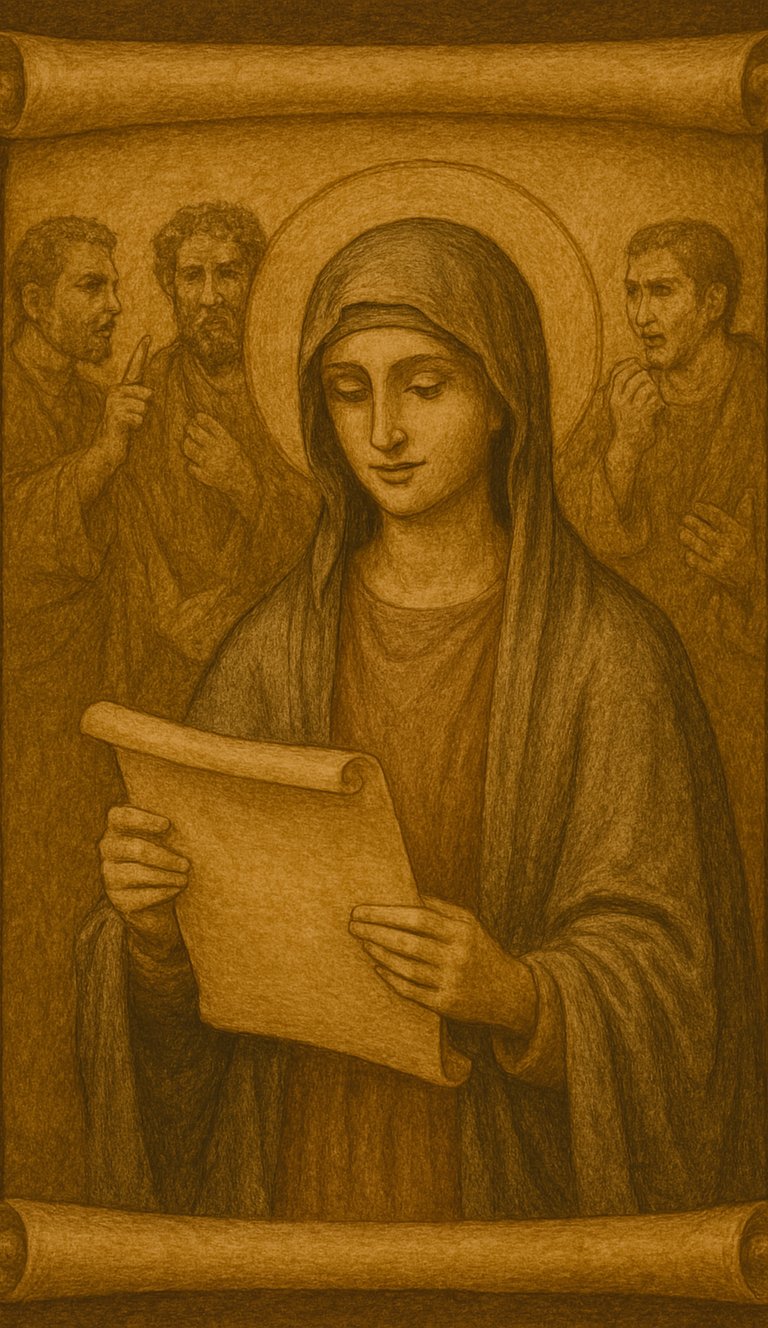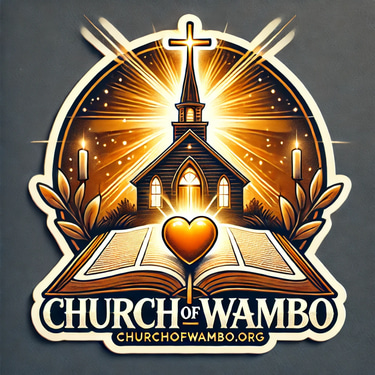A Fresh Look at the New Testament Part Three
🏛️ From Movement to Empire
How the Church drifted from the heart of Jesus’ teachings
When Jesus walked around Galilee, he wasn’t founding a religion.
He didn’t build temples.
He didn’t write theology books.
He didn’t tell people to start a global institution.
He gathered a few fishermen, tax collectors, women, outsiders, and told them to live with radical love, forgive like crazy, and become the change.
But fast-forward a few centuries... and it’s a very different picture.
Robes. Thrones. Inquisitions. Politics. Gold ceilings.
The message of Jesus, somewhere along the way, became The Church.
So, what happened?
🏃♂️ It Started as a Movement
The earliest followers of Jesus weren’t called “Christians.”
They were called The Way, because they followed a way of life, not a belief system.
They met in homes, shared meals, helped the poor, and expected Jesus to return any day now.
There were no popes, no cathedrals, no mega-churches. Just communities of love trying to live like Jesus taught.
They didn’t care who you were, Jew, Greek, man, woman, slave, free, all were welcome.
“There is neither Jew nor Greek, slave nor free, male nor female, for you are all one…” Galatians 3:28.
🏰 Then Came Rome
In 313 CE, something massive happened:
Emperor Constantine legalized Christianity.
Good news, right? No more persecution!
But there was a trade-off.
Christianity went from being a movement of misfits to an imperial religion.
It became respectable. Powerful. Institutional.
By the late 300s, it was the official religion of the Roman Empire.
Jesus had said, “My kingdom is not of this world.”
But suddenly, his followers were literally ruling the world.
⛪ The Rise of the Church
To keep things orderly, Church leaders started drawing lines:
This book is “in”, that one is “out.”
This teaching is “orthodox”, that one is “heresy.”
These people are “saved”, those ones are not.
Power structures formed:
Bishops
Councils
Doctrinal creeds
Eventually, the Pope
And with that came wealth. Land. Political power.
The teachings of Jesus?
Sidelined in favor of theological correctness and keeping the system running.
🪙 From Blessing the Poor... to Taxing Them
Jesus said:
“Blessed are the poor…
Sell what you have and give to the poor…
You cannot serve both God and money.”
But by the Middle Ages, the Church had:
Gold-encrusted cathedrals
Paid indulgences (buy your way out of sin)
Tithes and taxes on peasants
Bishops living like kings
⚖️ From Grassroots to Gatekeepers
Instead of asking, “Are you following Jesus’ way?”
The Church started asking, “Do you believe the right doctrine?”
Instead of saying, “God is within you,”
They said, “You need us to access God.”
Instead of welcoming doubters, outcasts, and seekers,
They burned heretics, launched inquisitions, and kept women silent.
🔁 So What Now?
Here’s the good news:
You don’t need to throw it all out.
There’s still gold buried in the roots of Christianity, Jesus’ actual message.
You just have to dig past the empire, the dogma, and the power plays.
That’s what this whole study is about.
Not rejecting Jesus.
Not blindly following tradition.
But going back to the real movement, the one that started with a barefoot teacher and a message that could change the world.
🌺 The Women, Mystics & Rebels
The unsung keepers of Jesus' original fire
Let’s be real: if you’ve only heard the version of Christianity taught in most churches, you’d think it was a boys’ club from the start.
But that’s not how it began.
The truth is women were at the heart of Jesus’ movement from day one.
They weren’t just helpers, they were leaders, teachers, and apostles in their own right.
And while powerful men-built cathedrals and creeds, these women, and spiritual rebels, kept the spirit of Jesus alive in-house churches, villages, and hidden texts.
👑 Mary Magdalene: Apostle of Apostles
Let’s start with the most misunderstood woman in Christian history.
You’ve probably heard her called a prostitute, right?
Yeah, that wasn’t in the Bible. That rumor started centuries later.
The truth? Mary Magdalene was:
One of Jesus’ closest followers
The first witness to the resurrection
A teacher and spiritual authority in some early Christian groups
In the Gospel of Mary, Jesus trusts her with deep spiritual insights, and she becomes a leader after his death. Peter? He’s jealous and dismissive.
🧕 The Women Who Funded the Mission
Luke 8:1–3 tells us straight-up:
Jesus’ ministry was financially supported by women.
Names like:
Joanna (wife of Herod’s steward)
Susanna
Mary Magdalene
These women weren’t just tagging along.
They were making things happen, organizing, funding, caring for the sick, spreading the message.
And guess what? They stuck around when the men ran away.
It was women who stayed at the cross.
It was women who went to the tomb.
🔥 The Female Apostles You Never Heard Of
Ever heard of Junia?
She’s mentioned in Romans 16:7. Paul calls her “outstanding among the apostles.”
Yep. Apostle. As in top-tier spiritual leader.
There was also:
Phoebe, a deacon (Romans 16:1–2)
Priscilla, who taught theology to male leaders (Acts 18:26)
Thecla, a fearless preacher who ditched marriage and faced down wild beasts.
🧙♀️ Enter the Mystics
As the institutional Church started building hierarchies and declaring who’s “in” or “out,” a different kind of spirituality kept bubbling underground.
Mystics didn’t care about power.
They cared about direct experience of the divine.
They believed God could be found within, not just in temples or rituals.
Some early examples:
Desert Mothers (and Fathers) who left cities to live in solitude and prayer
Perpetua, a young woman who had mystical visions and died a martyr
Hildegard of Bingen (a bit later), who wrote music, medicine, and theology based on her visions, and wasn't afraid to call out corrupt priests
💪 The Rebels Who Didn’t Fit the Mold
There were also the outsiders, the heretics, the healers, the “troublemakers” who kept asking hard questions.
Some aligned with the Gnostic movement, believing in inner light, hidden knowledge, and personal transformation.
Others just couldn’t accept the rigid, male-dominated version of the faith the Church was selling.
And yes, many of them were burned, banned, or buried in footnotes.
But their voices didn’t disappear, they survived in whispers, in hidden texts, in desert caves… and now, in us.
✨ Why This Matters
Because Jesus’ original movement wasn’t about hierarchy.
It was about humility.
It wasn’t about theology degrees.
It was about love in action.
And the people who best preserved that spirit?
Often… they were the ones the Church tried hardest to silence.


😳 Did You Know?
Before Constantine, Christians were pacifists, they refused to fight in wars.
After Constantine? Christianity became a tool of the military. Crosses on shields. Holy wars. Crusades.
🕯️ Hidden History
Many of the earliest followers of Jesus didn’t believe he was divine in the way later creeds defined it.
The idea that Jesus was “equal to God” wasn’t officially declared until 325 CE at the Council of Nicaea.
🧠 What Went Wrong?
It’s not that the Church was evil.
But when faith becomes an institution, it starts playing by the world’s rules:
Control
Politics
Wealth
Conformity
And suddenly, the radical love, humility, and inclusion that Jesus lived?
It gets... inconvenient.


🧠 Did You Know?
The Gospel of Thomas and other Gnostic texts present Mary Magdalene as a spiritual equal or superior to Peter.
Some say she received teachings from Jesus that the male disciples couldn’t handle.
🕯️ Hidden History
In many places, early Christianity was spread more by women than men.
They ran house churches, baptized new believers, and passed on Jesus' teachings before any Bibles even existed.
info@churchofwambo.org
© SDBEST LLC, 2025. All rights reserved.
